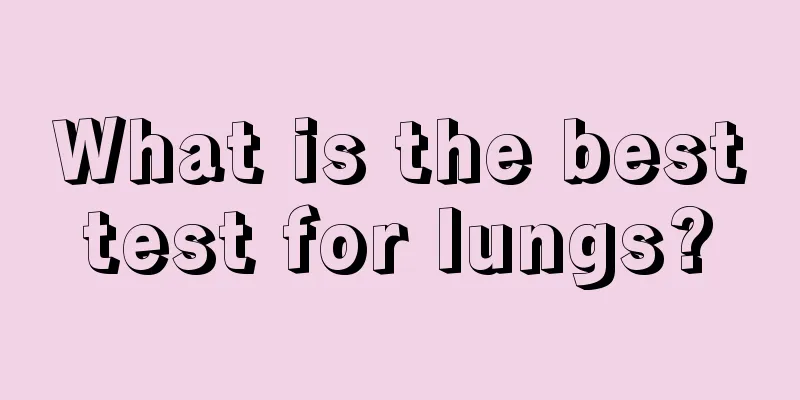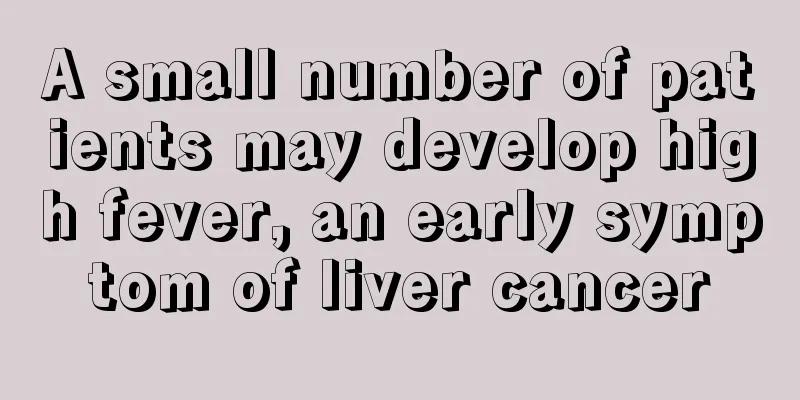What is the best test for lungs?

|
The incidence of lung diseases has been relatively high in recent years, and the incidence is getting younger and younger. Therefore, people must pay more attention to the health of their lungs, have more physical examinations, and take good care of their lungs. There are many factors that cause lung abnormalities, such as frequent smoking and drinking. If there is something abnormal in the lungs, it is best to go to the hospital for examination, because only a clear diagnosis can tell whether you have a disease, so there are some measures to check the lungs. 1. Project Pulmonary function tests include ventilation function, gas exchange function, respiratory regulation function and pulmonary circulation function, etc. There are many examination items and measurement indicators. In the past, pulmonary function instruments were mainly based on mechanical and chemical methods for detection. The measurement was cumbersome, time-consuming and labor-intensive, and the detection error was large, which limited its widespread clinical application and medical workers had limited knowledge of it. In recent years, with the development of science and technology, the emergence of new detection technologies, especially the application of electronic computers, lung function testing technology has made great progress, and its importance in clinical practice has been increasingly recognized. 2. Purpose 1. Early detection of lung and respiratory tract lesions. 2. Identify the cause of dyspnea and determine the location of airway obstruction. 3. Assess the severity of lung disease. 4. Assess surgical tolerance and the possibility of postoperative complications. 5. Physical examination, assessment of labor intensity and tolerance; 6. Monitoring of critically ill patients, etc. 3. Features 1. Pulmonary function test is a physical examination method that does not cause any damage to the body and does not cause pain or discomfort. 2. Pulmonary function tests have the advantages of high sensitivity, convenient repeated testing and easy acceptance by patients. 3. Compared with chest X-ray, CT and other examinations, pulmonary function tests focus more on understanding the functional changes of the lungs and are an important means of examining respiratory diseases. IV. Importance 1. Diagnose the patient's respiratory function status and determine the nature and extent of lung function damage. 2. Pulmonary function tests are required to diagnose COPD. 3. Pulmonary function tests help clinicians determine the severity of COPD and develop appropriate treatment plans based on the severity of the disease. V. Target 1. People with recurrent upper respiratory tract infections: observe whether lung function is damaged 2. History of smoking and chronic cough - see if the small airway function has changed 3. Seasonal cough and asthma attacks - see if you have asthma 4. Regular review of chronic bronchitis - monitoring the course of the disease 5. Abnormal chest X-ray: Determine the degree of lung function damage 6. Risk assessment of anesthesia and surgery, and prediction of postoperative recovery 6. Performance 1. Obstructive lesions: refers to changes in airflow obstruction caused by narrowing of the respiratory tract due to various factors, among which asthma is the most obvious. 2. Restrictive lesions: refers to changes in which the respiratory movement of the lungs is restricted, resulting in a decrease in lung ventilation. Diseases such as emphysema, pleurisy, and hydropneumothorax all have varying degrees of decreased lung ventilation. 3. Mixed lesions: refers to both obstructive and restrictive lesions, such as chronic obstructive pulmonary disease, late-stage asthma, pneumoconiosis, and pediatric bronchopneumonia. 7. Testing 1. Because your nose is pinched, you should keep breathing through your mouth. 2. Hold your mouth as tightly as possible to ensure that there is no air leakage during the test. 3. Follow the operator's instructions as much as possible and exhale and inhale immediately 4. Inhale as much as possible, and then exhale with maximum force and speed. |
<<: What are the symptoms of tonsil stones?
>>: How to eliminate gallstones?
Recommend
How long can you live if cervical cancer cells spread
Cervical cancer ranks first among gynecological m...
Summarize the symptoms of testicular cancer
Although the early symptoms of most cancers are n...
Can boiling water kill bacteria on egg shells?
Eggs are a type of egg we often eat. They have a ...
What fruit can sober you up the fastest
Drinking too much alcohol will make you feel unco...
What are the symptoms of capillary dilation
Capillaries are mainly in the inner layer of the ...
What vitamins are lacking in oral ulcers? Are they easy to treat?
Most oral ulcers are caused by vitamin deficiency...
What to do if you get gallbladder cancer during pregnancy
What are the effects of gallbladder cancer on pre...
What are the best tips for lubricating the intestines
If you have a poor diet or get too hot, you will ...
Which hospital is good for treating fibroids
Which hospital is good for treating fibroids? In ...
Can esophageal cancer be inherited?
Esophageal cancer is a common malignant tumor tha...
Sacroiliac arthritis
Arthritis refers to inflammatory diseases that oc...
What to do if indigestion causes bloating
Many people have poor gastrointestinal function a...
How to wash cotton clothes without fading?
Pure cotton clothes are also easy to fade when wa...
How to cure a broken heart
Almost everyone who has been in love has experien...
How many days can you eat soaked black fungus in winter
Many people are familiar with black fungus. This ...









